TIDBTW Guest: Valerie Lea Specht, fashion journalist & stylist, fashion editor at VOGUE Germany
A chat about how to dress for work at VOGUE, aligning your inner self with your outer appearance, and the German design talents we might want to keep an eye on
When you come to my house one of the first things you might notice is that print is not dead to me. Besides the fashion books that I raved about last week, I have a collection of hundreds of magazines, which – despite attempted decluttering over the years – still add up to quite impressive towers. I love my archive of fashion trends and journalism, I love to research for new editors and story angles, and I love my friends who bring back magazines from their travels. Arriving in England, I was greeted by a whole year’s stack of the How To Spend It magazine by the Financial Times – absolute bliss!!
Lately though, and with a decreasing attention span (may it be sleep deprivation, phone behaviour, life), I noticed a strange habit settling in: sometimes I would obsess about a cover or story and then after buying the magazine it would be enough for me to just have it; I would never finish the whole mag. There are exceptions: besides HTSI, the ones I still sit down with and read through every time are Apartamento, The Gentlewoman and VOGUE. My favorite feature in the latter must be Stil, von hier. It showcases local as in German designers who are considered the most innovative, interesting and worth investing in. It’s part of my work to see who is in there, but I’m also always super curious to find out who made the cut.
One of the editors who highlight German style for this column is journalist and stylist Valerie Lea Specht. I first fell for her way with words, and ever since following her on instagram too I’ve enjoyed seeing her work through texts and visuals, but also rare reflections of her own personal style.
I’m always very interested to hear what people buy and wear who work in fashion and who are exposed to trends every day – how do they stay true to themselves and not fall for every pretty new thing? I had to ask Valerie herself and feel so lucky she got back to me with all her insights. We yet have to meet in person, but I do hope we get a chance during Berlin Fashion Week next weekend (Valerie, this is my awkward way of asking for a coffee date <3). Until then, you and I together can indulge in Valerie’s beautifully curated looks, admirable vintage finds, and food for thought on (sustainable) fashion. Please enjoy! xx
TIDBTW Guest: Valerie Lea Specht, fashion journalist & stylist, fashion editor at VOGUE Germany
Things I didn’t buy this week: Who are you and what are you doing? How did you arrive where you are right now?
Valerie Lea Specht: My name is Valerie Lea Specht, and I live and work in Munich. Currently, I am working in the fashion department at VOGUE Germany, where I have been writing online and print articles as well as conceptualizing and styling fashion shoots since December 2023. Before that, I worked as a freelance fashion journalist and stylist for commercial clients as well as publications like Monopol Magazine, Harper's Bazaar or Numéro, with stops at Achtung and Süddeutsche Zeitung Magazin. I completed my Bachelor's degree in Fashion Journalism & Communication at the AMD Academy of Fashion & Design in Munich in 2023.
TIDBTW: Who has been / is your biggest inspiration for your personal style and how would you describe it?
VLS: It’s less about a specific person for me and more about an attitude. The way someone carries themselves when they’re completely at peace with who they are and what they’re wearing – that confidence is unmatched. They might have a completely different sense of style, but what moves me is when the outer appearance aligns with the person’s character. You wear the clothes, not the other way around. Authenticity leads to individuality, and whether it’s in the context of fashion or life in general, it’s something I deeply admire. I love observing people like this, trying to understand why they chose a particular jacket or boots at that moment in their life, where they found them, and the story behind it.
A recent example I came across on Instagram: Stylist Marc Goehring's latest obsession with Bavarian traditional elements, which he mixes with high fashion and a kink aesthetic. It all makes so much sense. I love it.
Additional names that come to mind (in no particular order and as an ongoing list): Emma Corrin, Sarah-Linh Tran, Anne Imhof, Chloë Sevigny, Martina Tiefenthaler, Wana Limar, Tilda Swinton, Michèle Lamy, FKA Twigs...
TIDBTW: Can you show us the outfit that feels the most you in this season of your life?
VLS: This would be my go-to outfit: my vintage striped Alexander McQueen coat, paired with either a dark polo sweater or a men’s shirt, baggy black wool pants from Cos, and either my black Tabi boots or my leather loafers from Proenza Schouler.
I’d add some silver jewelry and a vintage cow-hair bag. (Editor’s note: This is a vintage moment that’s really growing on me!)
I could wear this every day – super comfortable, yet full of interesting textures and nods to fashion history that inspire and excite me.

TIDBTW: You are working at VOGUE magazine, so I can imagine that you meet numerous people with great taste and fantastic brands on a daily basis. How has joining the VOGUE editorial team impacted your own wardrobe? And how do you choose the clothes you want to wear to work?
VLS: Meeting so many completely different people through my job is something wonderful and broadens my horizons in so many different ways. Working at VOGUE Germany has also changed my style to some extent. In my daily wear, I notice that during very intense weeks, I have no desire to layer interestingly or to play around with accessories. The perfect no-brainer uniform for me is one of my exciting Issey Miyake Pleats Please tops and my black Cos pants:
or one of my favorite sets. That always works – even for spontaneous client meetings.
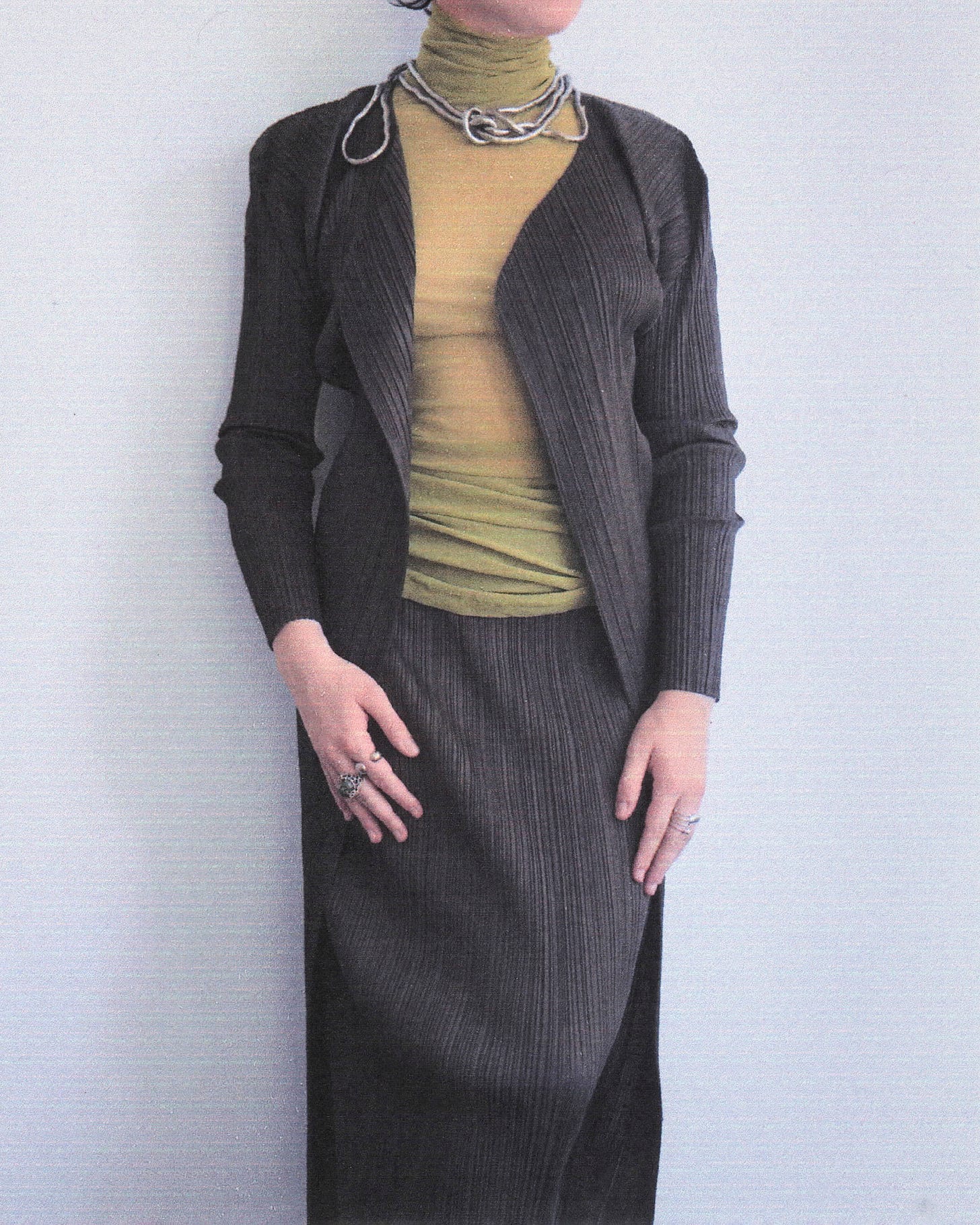
At the same time, I suddenly have invitations on my table that allow me to dress up really fancy – and that's truly fun! Last year, I treated myself to a beautiful runway piece from my favorite brand (which, unfortunately, no longer exists), A.F.Vandevorst. A two-layered asymmetrical dress – thanks to VOGUE, the cost per wear is now more than justified, haha.
TIDBTW: Simultaneously, because I guess many of us already feel like that even without working at VOGUE: How do you manage to not get overwhelmed by trends and influences?
VLS: When it comes to my personal style, the answer is simple: it and the pieces in my wardrobe that define it for me have always been there. Being comfortable in my body and knowing exactly which fashion buttons to push to feel at ease in any situation I find myself in is incredibly valuable. It gives me a sense of calm and a clear perspective, allowing me to approach all the trend topics on a personal level with more nuance. Through my highly visual work, I’ve also learned to apply a kind of filter and understand clearly what looks dreamy on a model (partly because there are 10 styling clips holding the outfit together on the back) and what works for me. I think most people who work in fashion feel the same; you’re no longer easily thrown off by trends when it comes to your own style.
Recently, TikTok creator and stylist
shared a shopping tip that I totally agree with. If a trendy piece excites you and you feel the urge for an impulse buy, reflect using this method: Research a second-hand or vintage version from a time when a similar style was also popular. In the best-case scenario, you’ll end up with a piece that’s usually of higher quality, with the fleeting trend attributes minimized. The research not only teaches you a bit about fashion history, but the longer process quickly shows you just how much you actually want the piece. I love this approach! And the best part: it promotes sustainable consumption.TIDBTW: I love the column Stil, von hier and naturally very much enjoy the highlighting of rising German fashion designers. While working on these, what do you find the most interesting about the scene at the moment?
VLS: Thank you for that! The interviews I’ve had the chance to conduct, including with Christa Bösch and Cosima Gadient from Ottolinger or Amélie Riech from Uncommon Matters, are some of my favorites.
To answer this question, I’d like to quote Luisa Dames, whom I spoke with for the September 2024 issue about her shoe company Aeyde: “I think there's nothing more exciting than working with undiscovered niche talents who aren’t yet on the international radar. From a traditional marketing standpoint, I would be advised against this and encouraged to go with established names because with the bigger ones, you’re buying into an aesthetic that they can reproduce consistently. With newcomers, that style is often not as well-defined yet. But the casting process is worth it.”
Luisa perfectly sums up a current curiosity I feel is in the air and applies it successfully to her own brand. A new generation is emerging, one that wants to do things differently and, for the first time, dares to say no. (Here, I immediately think of Luis Doppelgarten from No Faith Studios, whose strategy clearly stands apart from the traditional way of establishing a fashion brand.) It's about building a strong community as a brand and also trusting in new talents. These talents exist in Germany; they’re just not always that obvious.
TIDBTW: How would you describe your relationship with buying (new) things?
VSL: When I buy something new, it's usually the usual suspect basics like jeans and pants from high-street labels like Arket, Cos, and Massimo Dutti – or, ideally, great pieces from up-and-coming designers. Everything else is second-hand, and I don’t mind whether it's from Vestiaire Collective, a fancy pop-up, the 50-cent box under a flea market stand, or thrift stores like BRK Kleiderläden. Buying second-hand is a question of individuality, sustainability and, especially when it comes to designer pieces, a question of money. While I love the hunt for a significant piece, I am unfortunately just as impulsive when it comes to shopping second-hand. This is definitely where my FOMO kicks in – something I hope to become a little more patient about
THINGS YOU DIDN’T BUY – BUT THINK OF
TIDBTW: Are there some clothes in your past that you didn’t buy, but still think about?
VLS: There’s exactly one of them: I had saved an Issey Miyake dress on Vestiaire Collective for a long time that comes from the Pleats Please Guest Artist series with contemporary Japanese photographer Yasumasa Morimura from 1996. It was listed, as expected, in the five-digit range, just waiting to be bought either by a fashion museum or an archiving expert. Then, one day, the price dropped below 1000 euros – which is incredible for a piece like this – but it still exceeded my budget, and that’s okay. I hope to see it live on someone someday! For example, at the Met Museum, which has another piece from the Autumn/Winter 1996/97 collection.
THINGS YOU DID BUY AND WHY
TIDBTW: Can you name your highlight purchases of the last few years or ever? Or maybe there was a special gift you received?
Ever since I received my Tabi boots as a gift – one of the best presents I've ever gotten – they have been my faithful companions. (Editor’s note: If you love your Tabis too, read Valerie’s article about Gen Z’s mindshift towards shoe repair here)
Another favorite is my previously mentioned Alexander McQueen coat, which dates back to the Lee Alexander McQueen era.
I bought it at the vintage store Miramu in Giesing, Munich – owned by a truly radiant person, so I highly recommend it. I paid 70 euros for this coat from the Spring collection of 1998.
Interestingly, there’s a well-known photo of Robin Williams wearing almost the same model at a red carpet event. (Editor’s note: I absolutely love that, what a beautiful omen)
The coat fits me like a glove and is not only historically significant but also makes me feel wonderful every time I wear it. Plus: It served me especially well during my VOGUE interview last year.
TIDBTW: Is there something on your wishlist for this year? (You might know more than we do)
VLS: I never thought I’d be a Tod’s girl, but I can’t stop thinking about the current “Yorky” loafers in grey with their long leather tassels. I love how, as loafers, they generally have a casual, comfortable silhouette, but their texture gives them an almost sculptural quality. This pair definitely surprised me in the best way.
Editor’s note: Marc Goehring loves them too! They really do resemble two cute Yorkshire terriers, a vibe that might seem hard to pull off. But then again it’s 2025 and we’re having fun – and they are elegant enough to get away with it. I tried to find them secondhand, but just like my latest LOEWE obsession, they are nowhere to be seen. Currently on sale at Mytheresa though if you consider the investment.
I’m also considering investing in a great vintage men’s suit. I’m really into more masc-presenting styles on myself, and I feel like I’d get a lot of wear out of it – especially if the shoulders are well-tailored.


Speaking of which: There’s a blazer from Martine Rose on Vestiaire that I’ve had my eye on for a while. She was a consultant for Demna’s Balenciaga back in the day, and in my opinion, not only is she one of the most important women working in fashion today, but she’s also a master of perfect shoulder structures (side note: I highly recommend checking out episode “S3 E4: Martine Rose” of the i-Dentity podcast by i-D Magazine.)
On my radar lately is also the Belgian up-and-coming designer Julie Kegels – I love how she mixes the ordinary with her touch of trompe-l’œil.
TIDBTW: I recently saw a photo of the outfit you wore to your first day as a VOGUE intern in 2016. How do you feel about this look now? And what would you recommend to someone starting in the same position today – any general advice and most importantly, what should they wear on the first day?
VLS: I find the look from that time, from my current perspective and at my age, to be quite fitting – even though it felt much more mature back then than what I was used to as a student.

"Wear what makes you feel good" sounds like the worst cliché, and honestly, if I read that and had a job interview tomorrow, I would roll my eyes. Perhaps a more precise suggestion would be: Grab a standout favorite piece and keep the rest basic. But at the end of the day, it’s not about whether you have silly designer bags or not, but about aligning your inner self with your outer appearance. Keyword: Fashion as a Communication Tool. And precisely because German fashion journalism is anything but diverse, this is more important than ever.
TIDBTW: What is sustainability in terms of fashion to you?
VLS: Right now, we’re experiencing a kind of sustainability fatigue – even among those who were initially enthusiastic about the movement. It’s really unfortunate, especially considering the many people who are genuinely dedicating themselves to positive change. I, too, have become weary of how the term "sustainable" is used so inflationary and without proper definition. At the end of the day, there aren’t any truly sustainable pieces of new clothing – only more sustainable alternatives. Regarding the second-hand market, I hope the fast-fashion shopping mindset calms down, allowing us to appreciate the value of each individual garment again. This also means we should take better care of our clothes, perhaps by investing in repairs or even learning to do it ourselves.
That said, my favorite TikTok trend of the year has to be “underconsumption core.”
TIDBTW: Thank you so much for sharing, dear Valerie! <3
VLS: xxx Thank you so much for the lovely questions!!


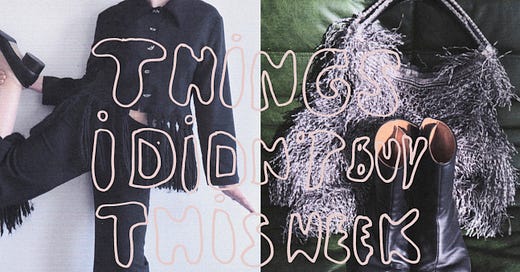




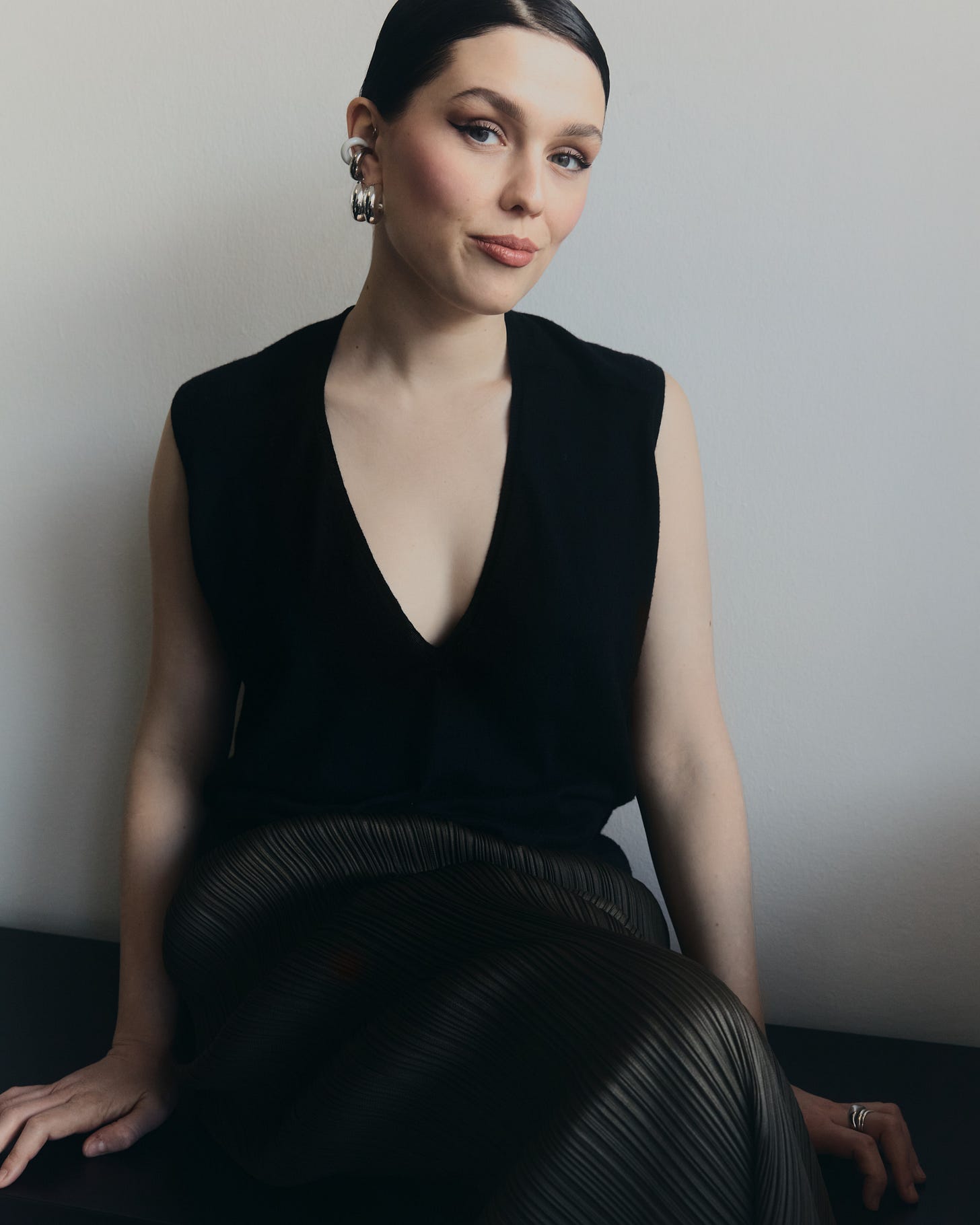
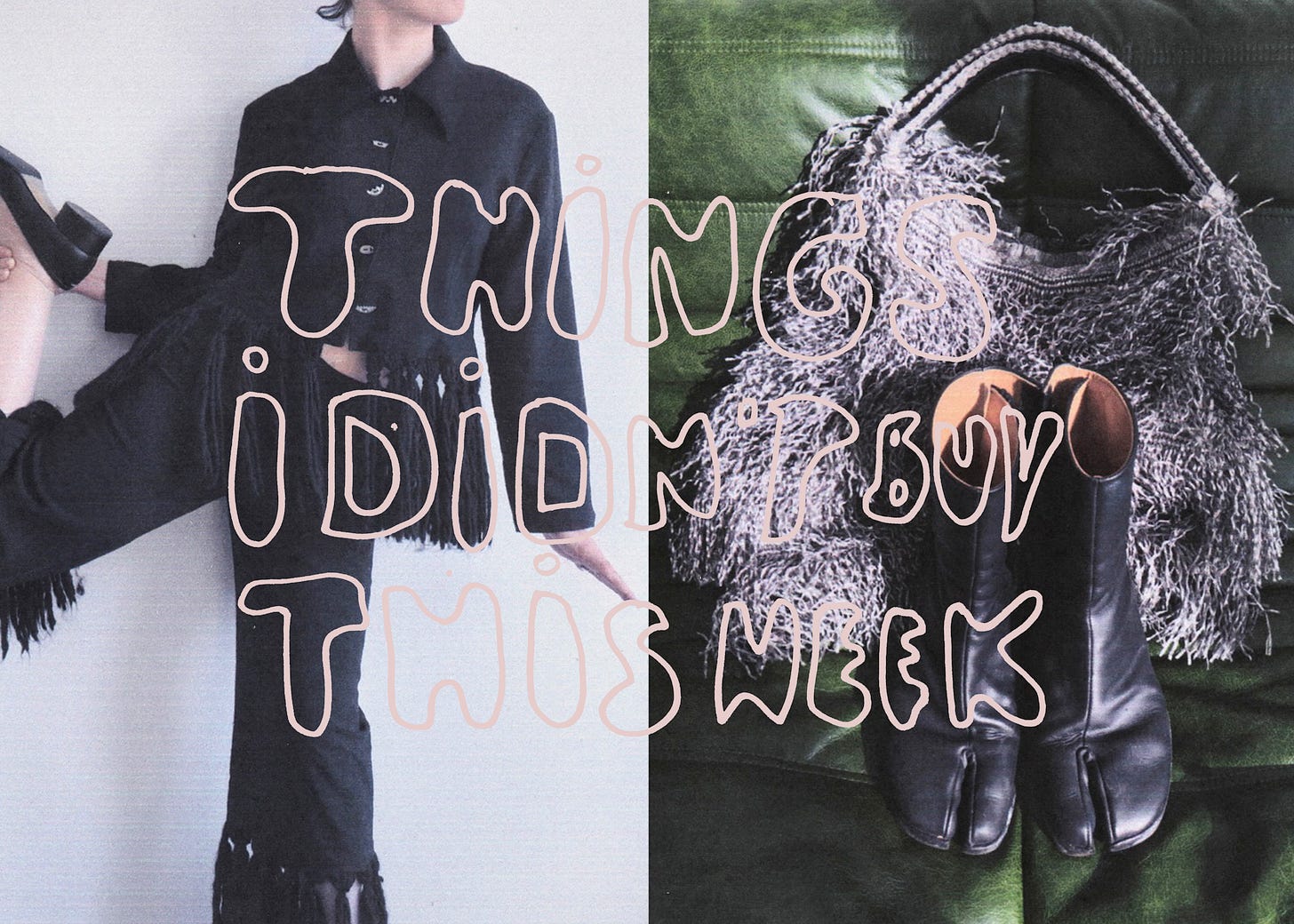

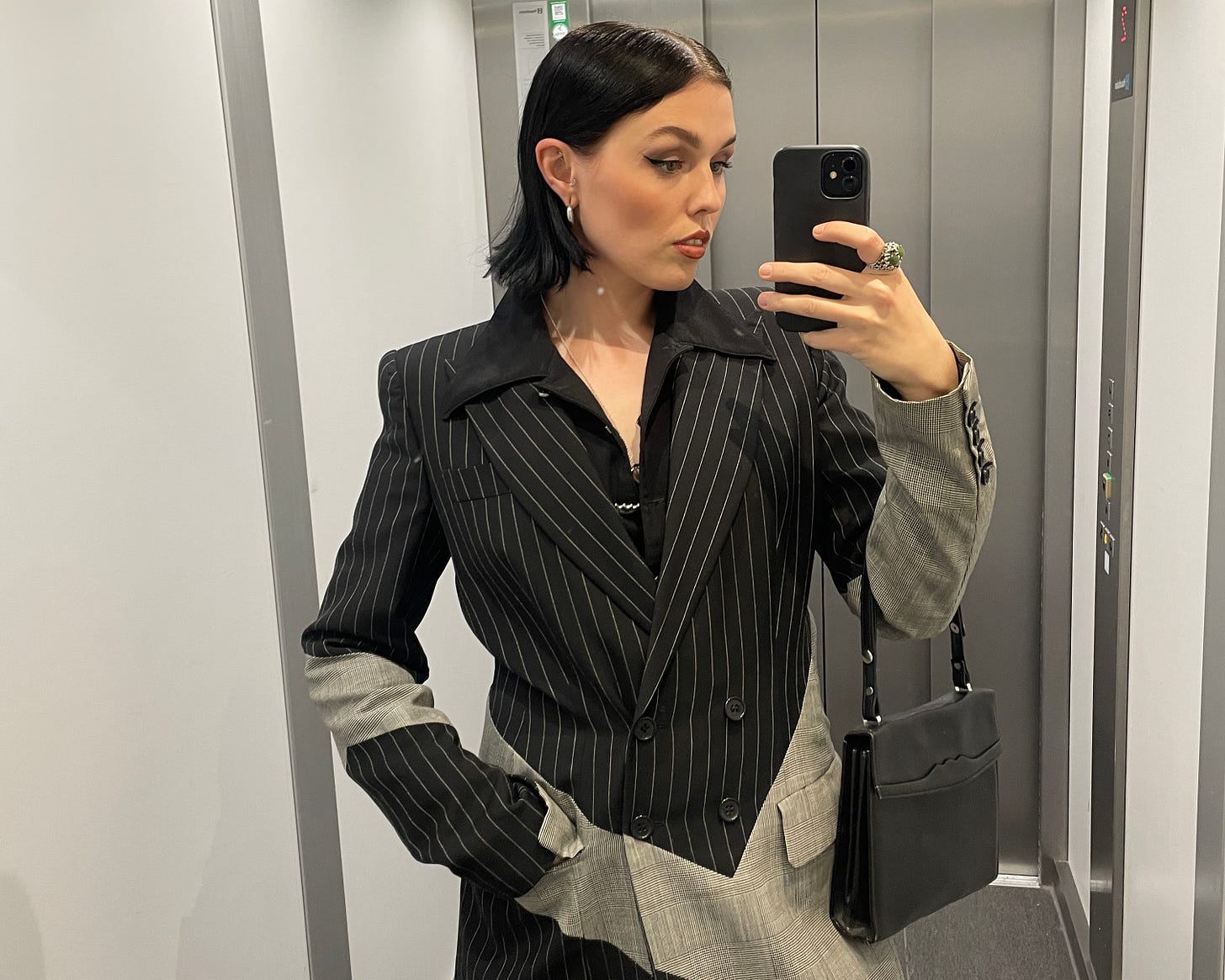
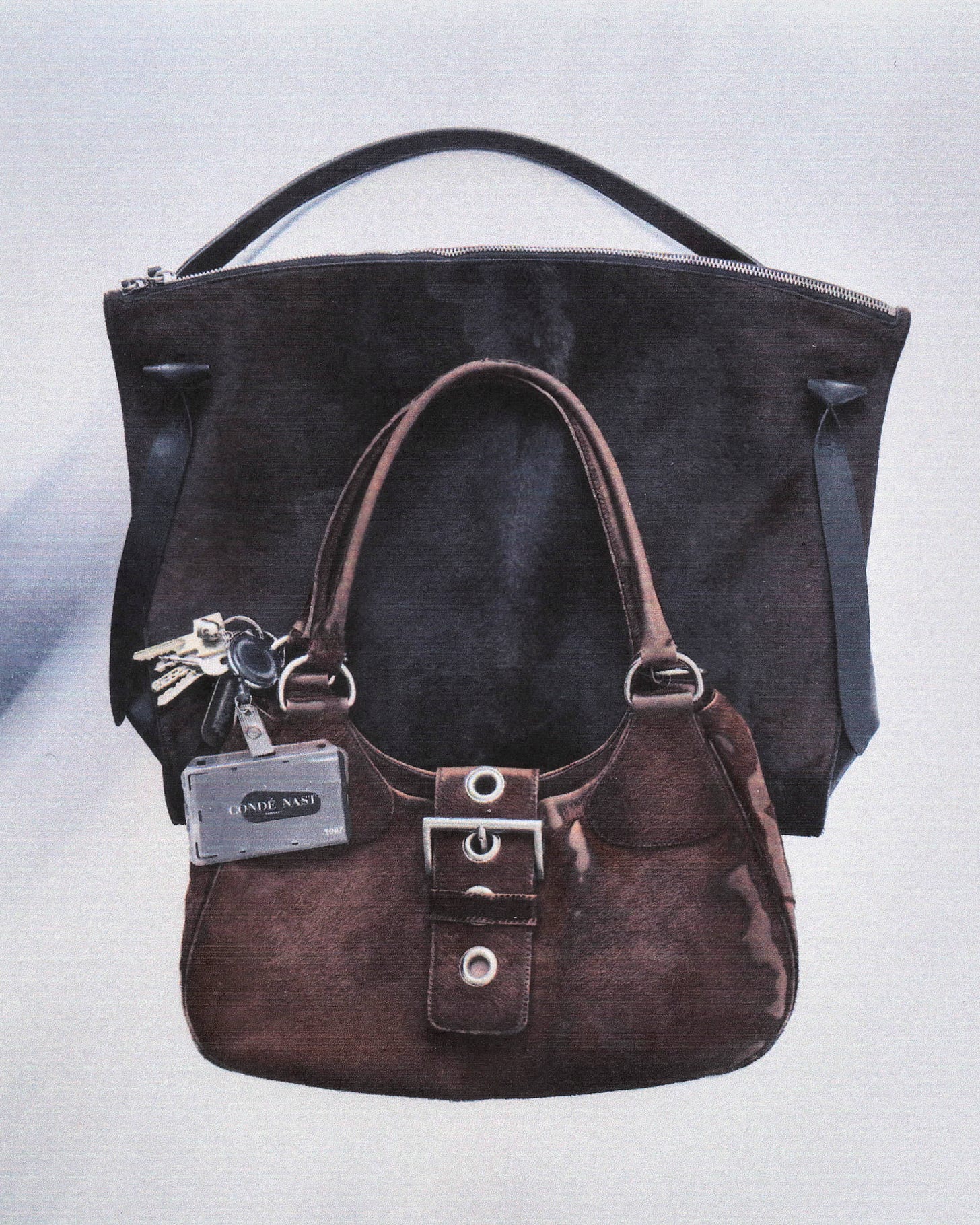

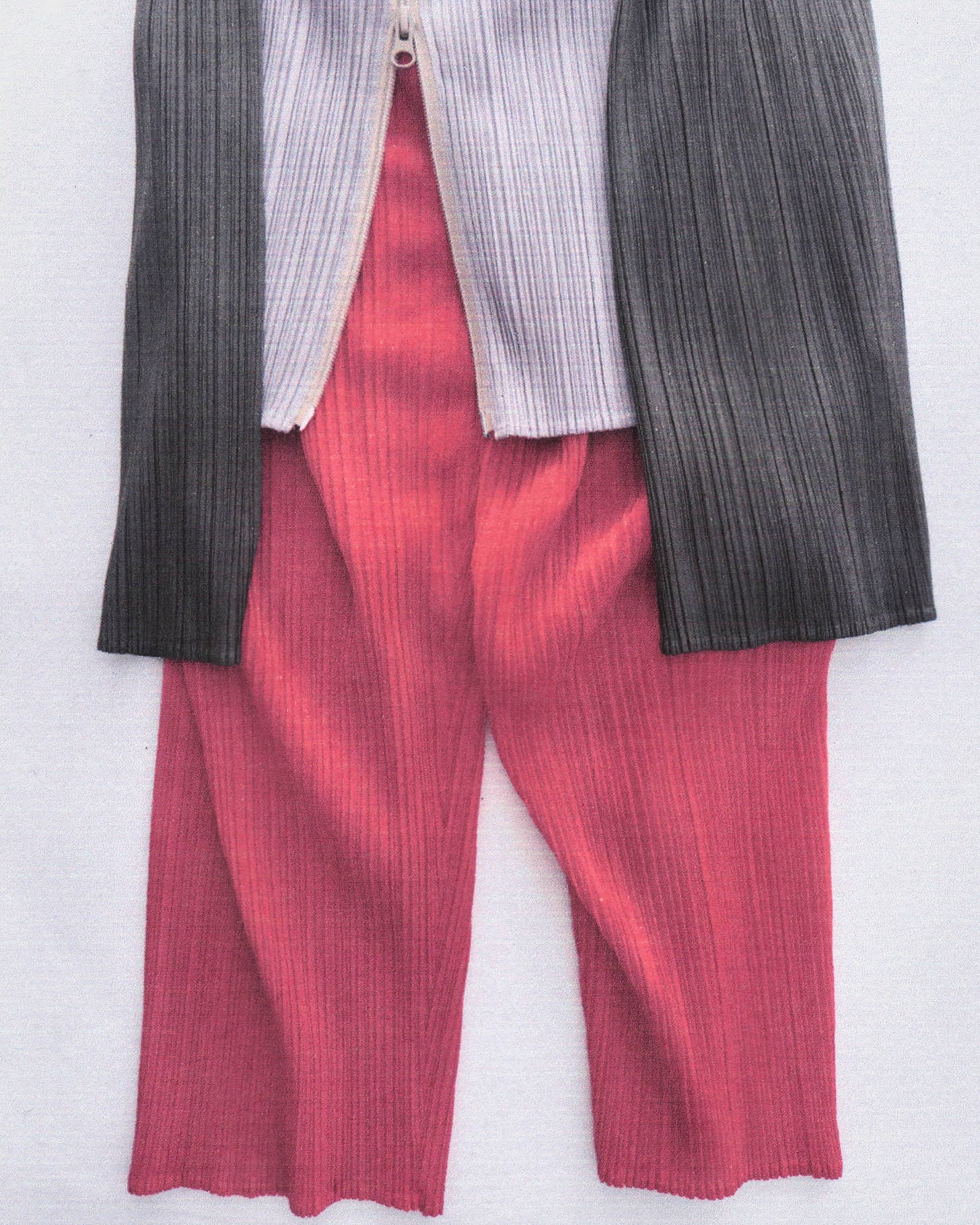
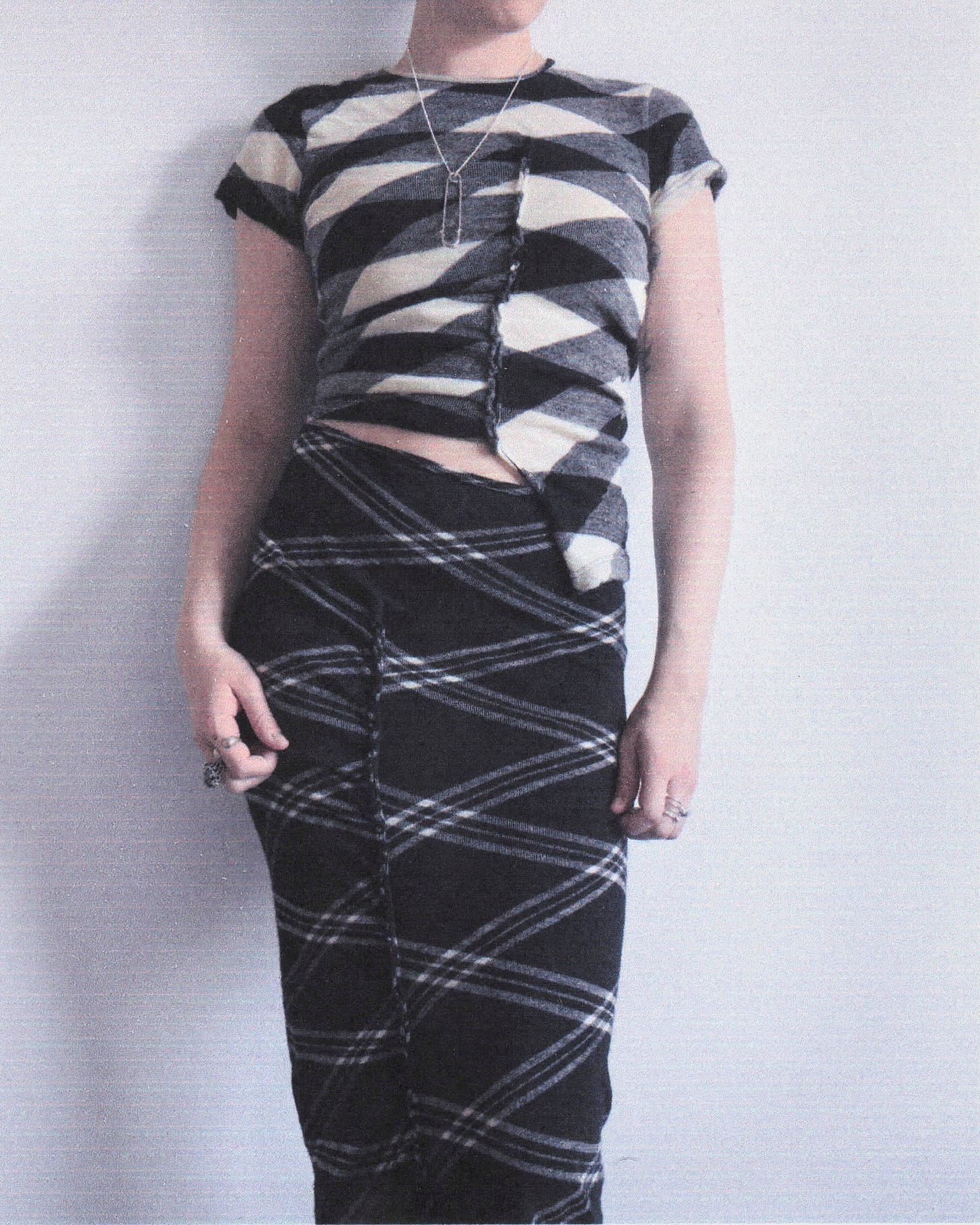
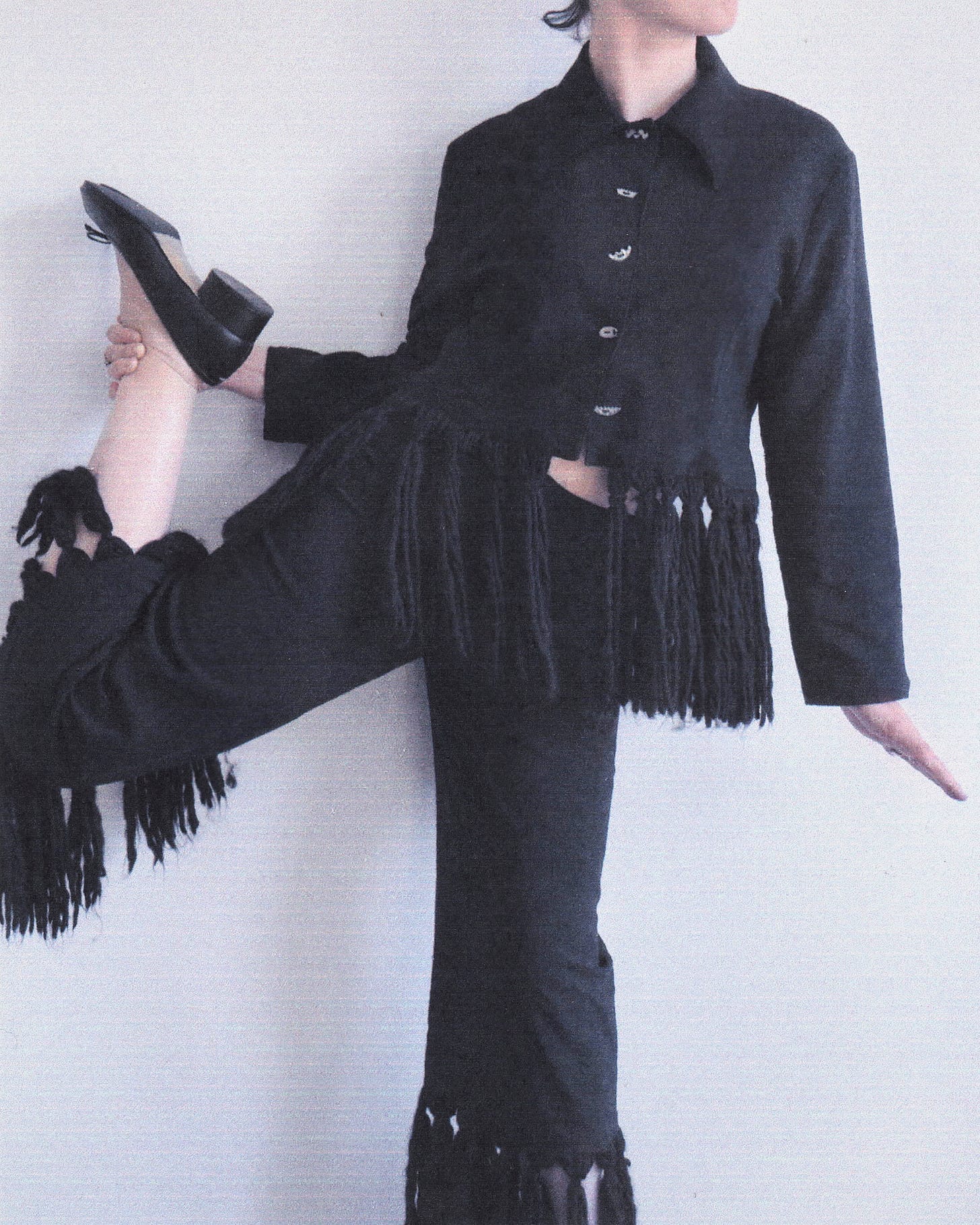
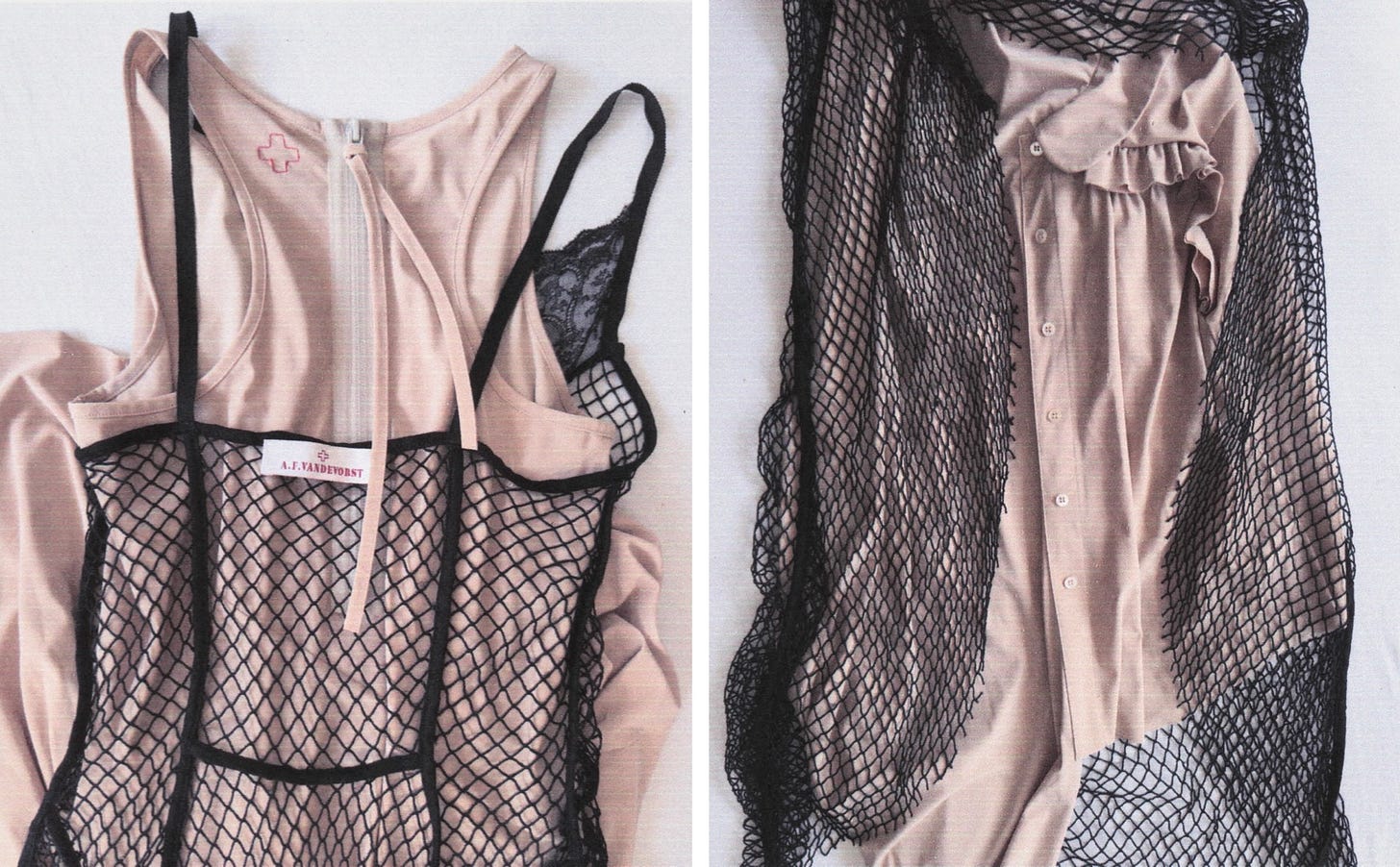

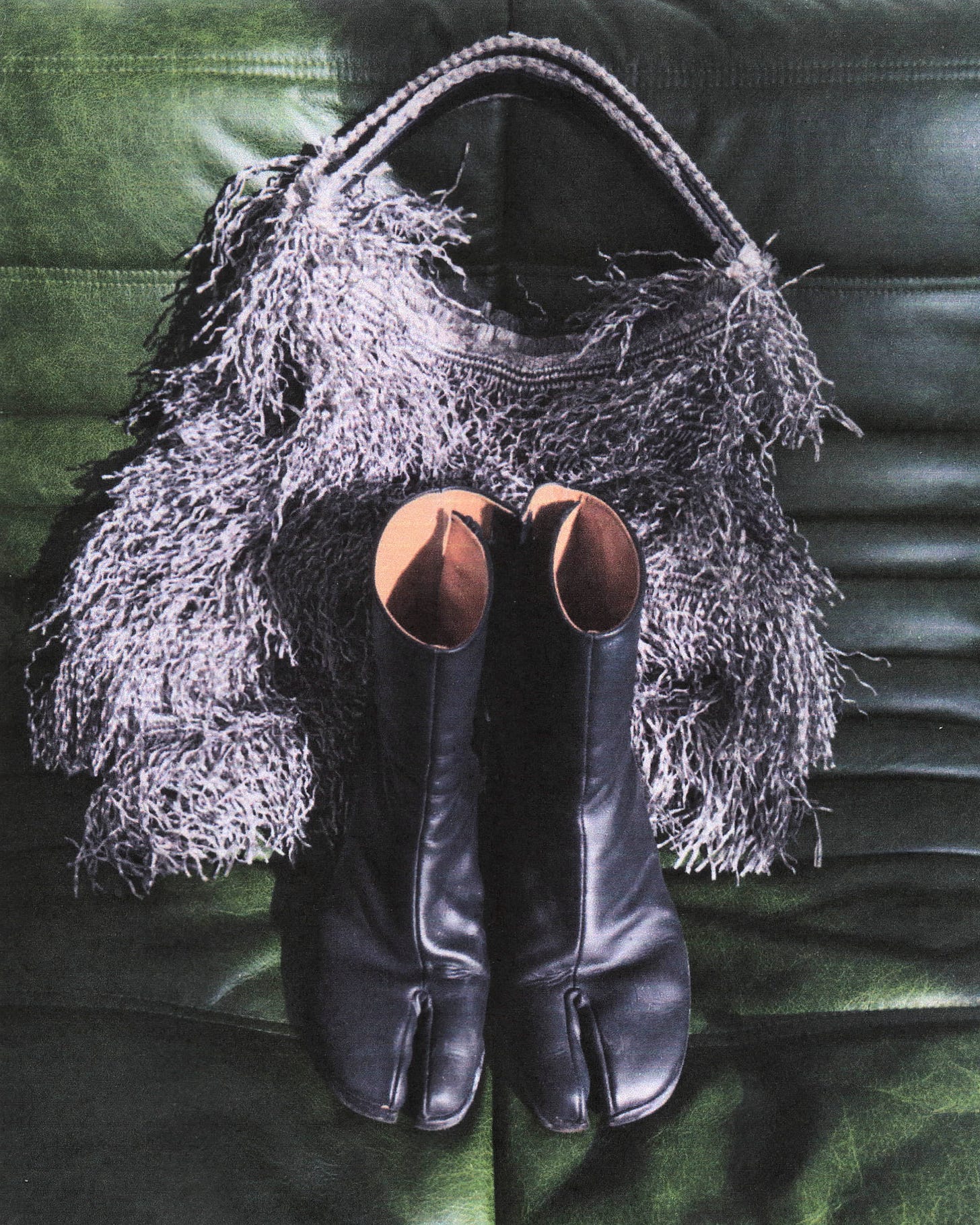
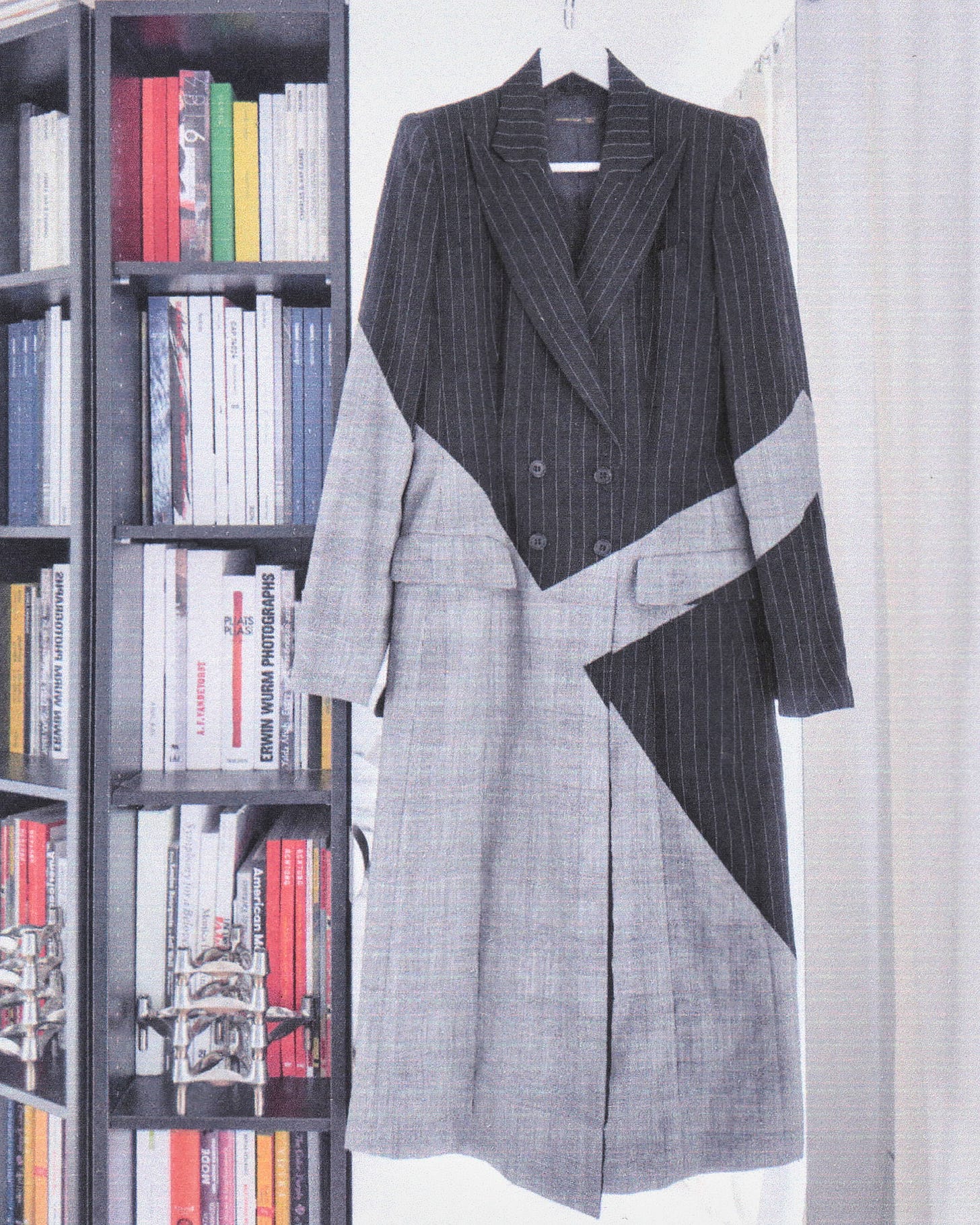

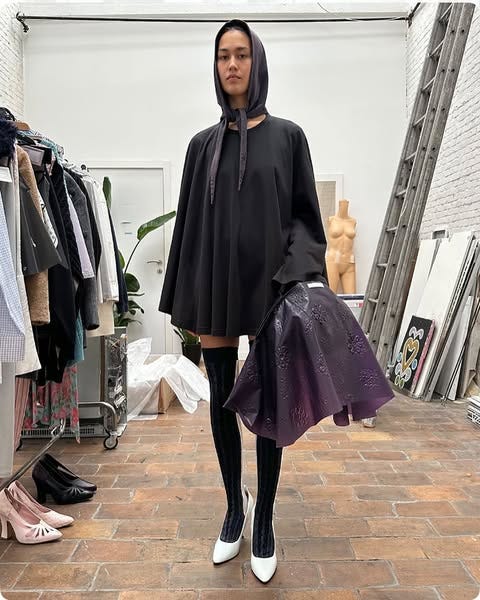
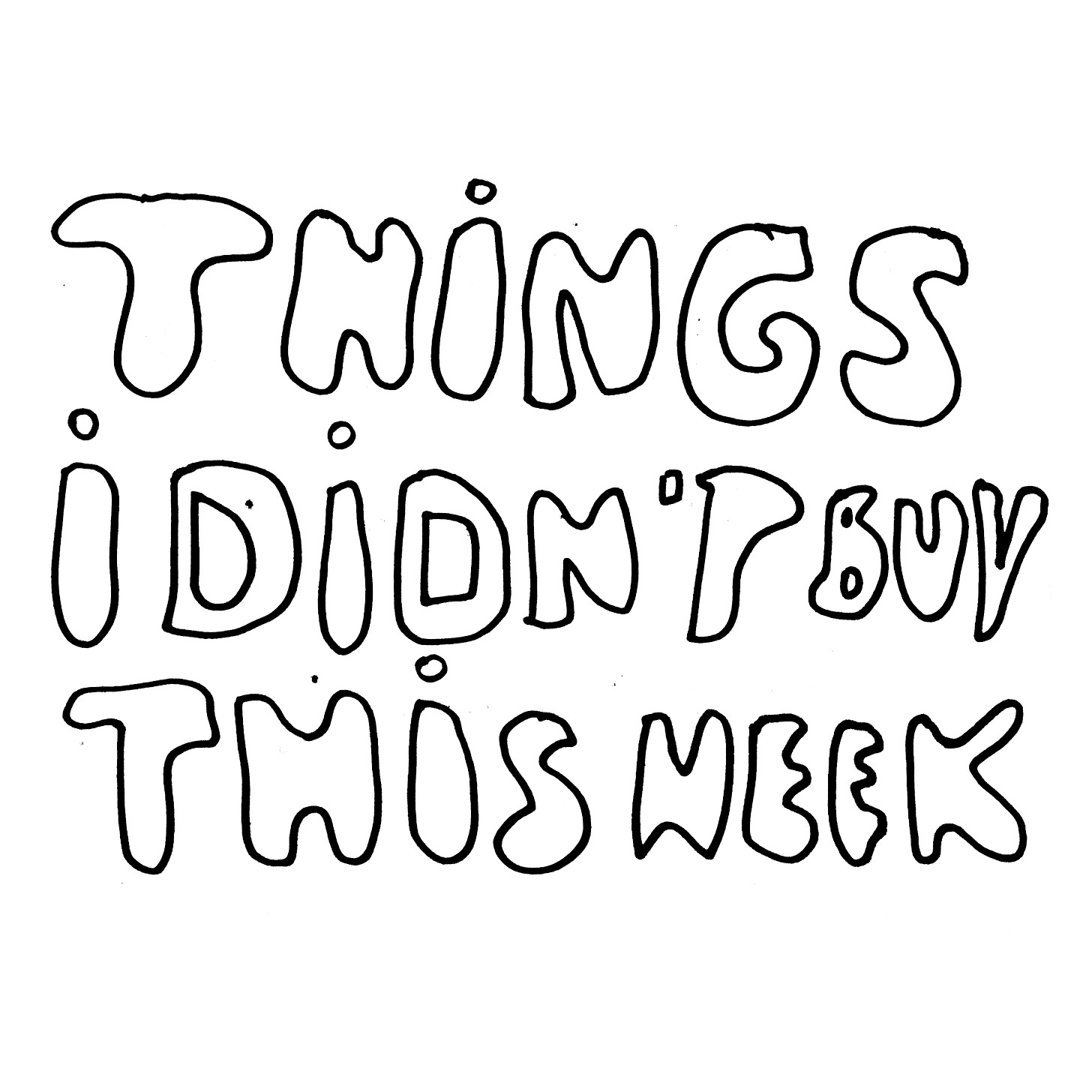
I loved everything about this! Your smart questions, her deep answers, the way the conversation carries into different aspects of a topic - I think German Vogue is so good right now and love to read about the voices behind it! xx